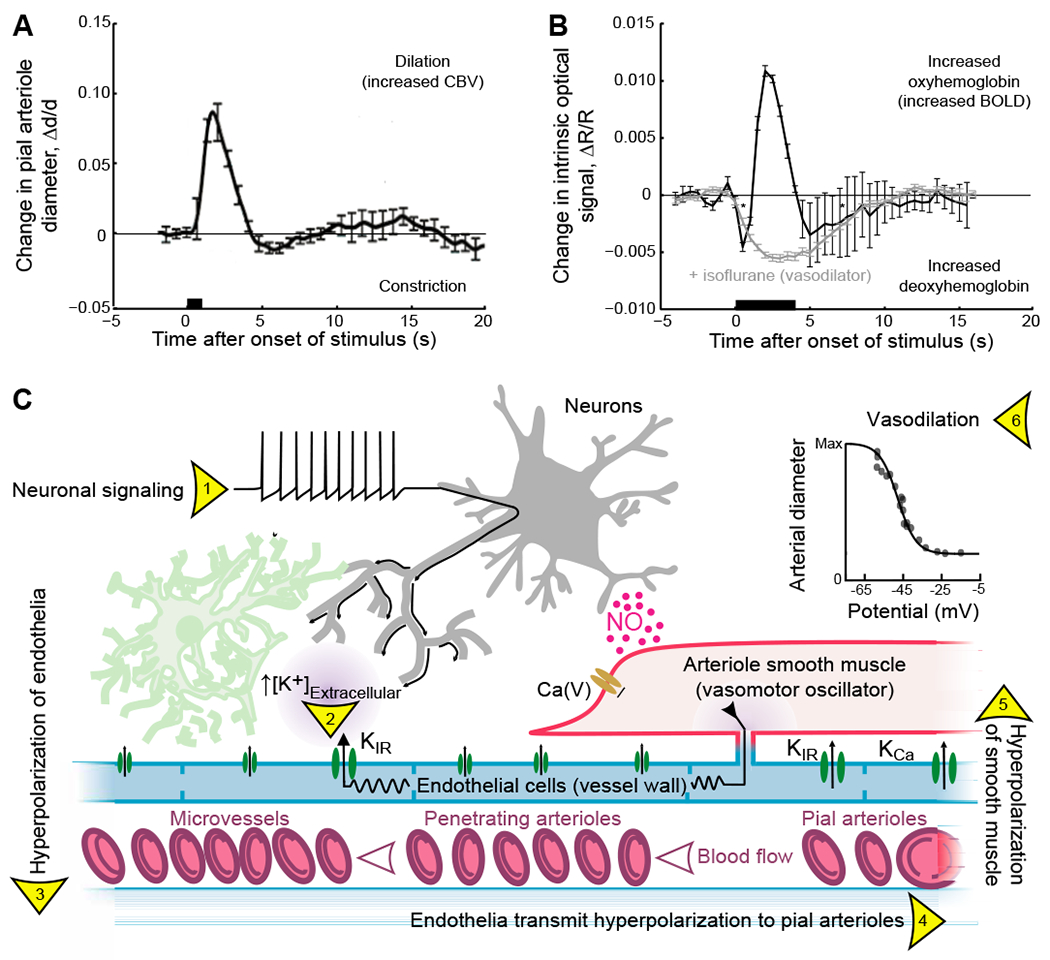Figure 1. The neocortical vascular response to phasic sensory stimulation and the mechanism for fast neurovascular coupling.

(A) The canonical effect of neuronal activity on the diameter of pial vessels as measured with two-photon laser scanning microscopy (Kleinfeld et al., 1998) using a head-fixed rat. The stimulus is a 500 ms puff to the vibrissae. Adapted rom (Uhlirova et al., 2016)
(B) The canonical effect of neuronal activity on hemodynamics as measured with intrinsic optical imaging using 630 nm light (Grinvald et al., 1988) using a head-fixed mouse. The stimulus is a 4 s puff to the vibrissae. The isoflurane data refers to a breathing mixture of 1.8 % (v/v) isoflurane in oxygen. Adapted from (Knutsen et al., 2016).
(C) Rapid mechanisms for communication of neuronal activity to drive smooth muscle hyperpolarization and arteriole dilation. Neural activity (1) leads to an increase in K+ in the perivascular space surrounding microvessels that activates the potassium inward rectifier (2), KIR, to generate a local hyperpolarization of the endothelial membrane (3). The hyperpolarization spreads to adjacent endothelial cells through gap junctions to activate KIR currents in adjacent cells (4). This results in a propagating signal from microvessels to penetration arterioles and finally surface or pial vessels. The hyperpolarization spreads to adjacent smooth muscle cells (5) and deactivates voltage-dependent Ca2+ currents, Ca(V), to induce smooth muscle relaxation and arteriolar dilation (6). Rapid arteriole dilation is also induced by binding of nitric oxide (NO) that is released from some inhibitory neurons, as well as other brain cells, i.e., endothelial cells, astrocytes, and microglia. The increase in arteriole diameter (panel A) can lead to an increase in blood flow. Adapted from (Longden et al., 2017) and (Knot and Nelson, 1998).
